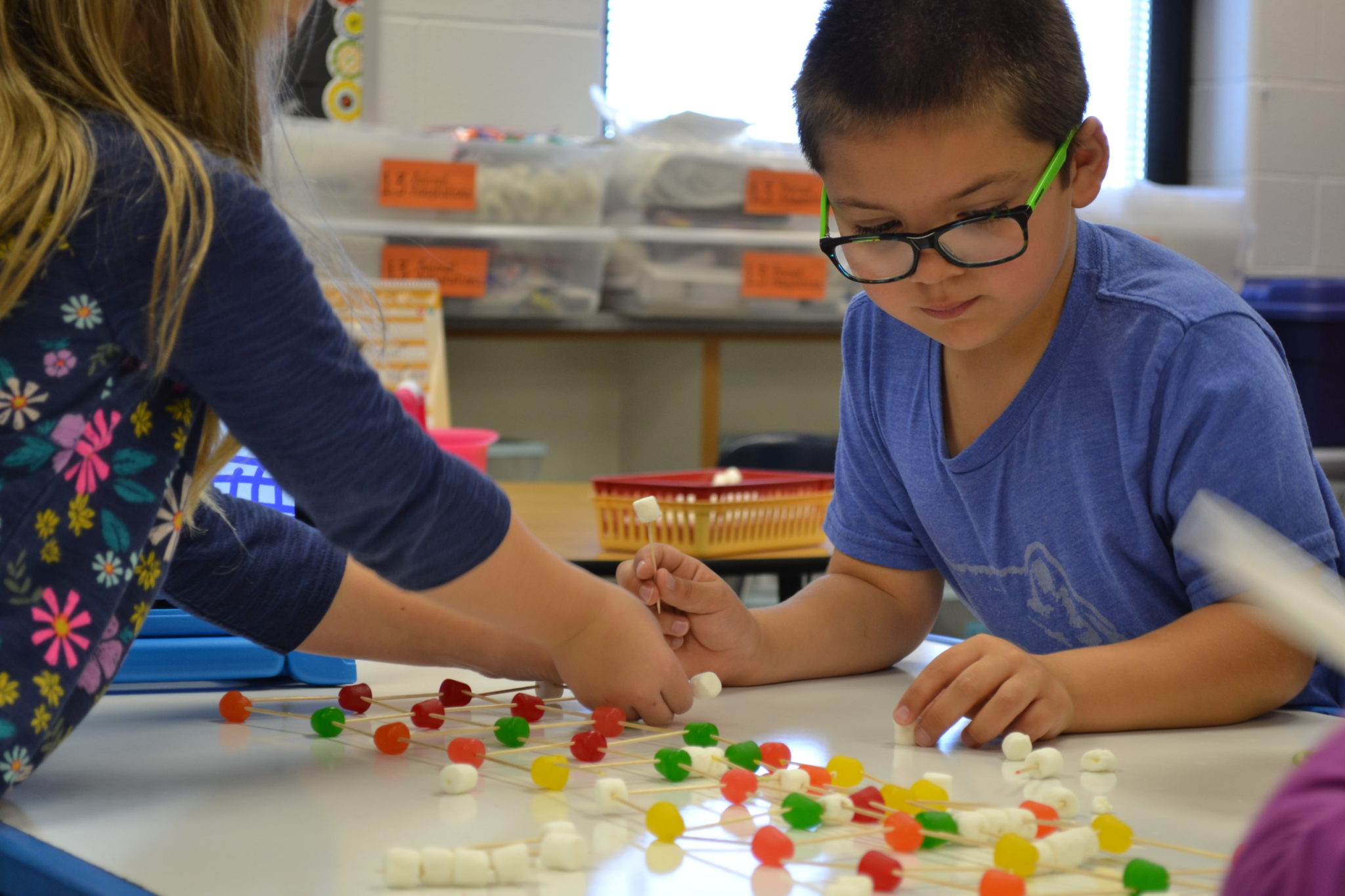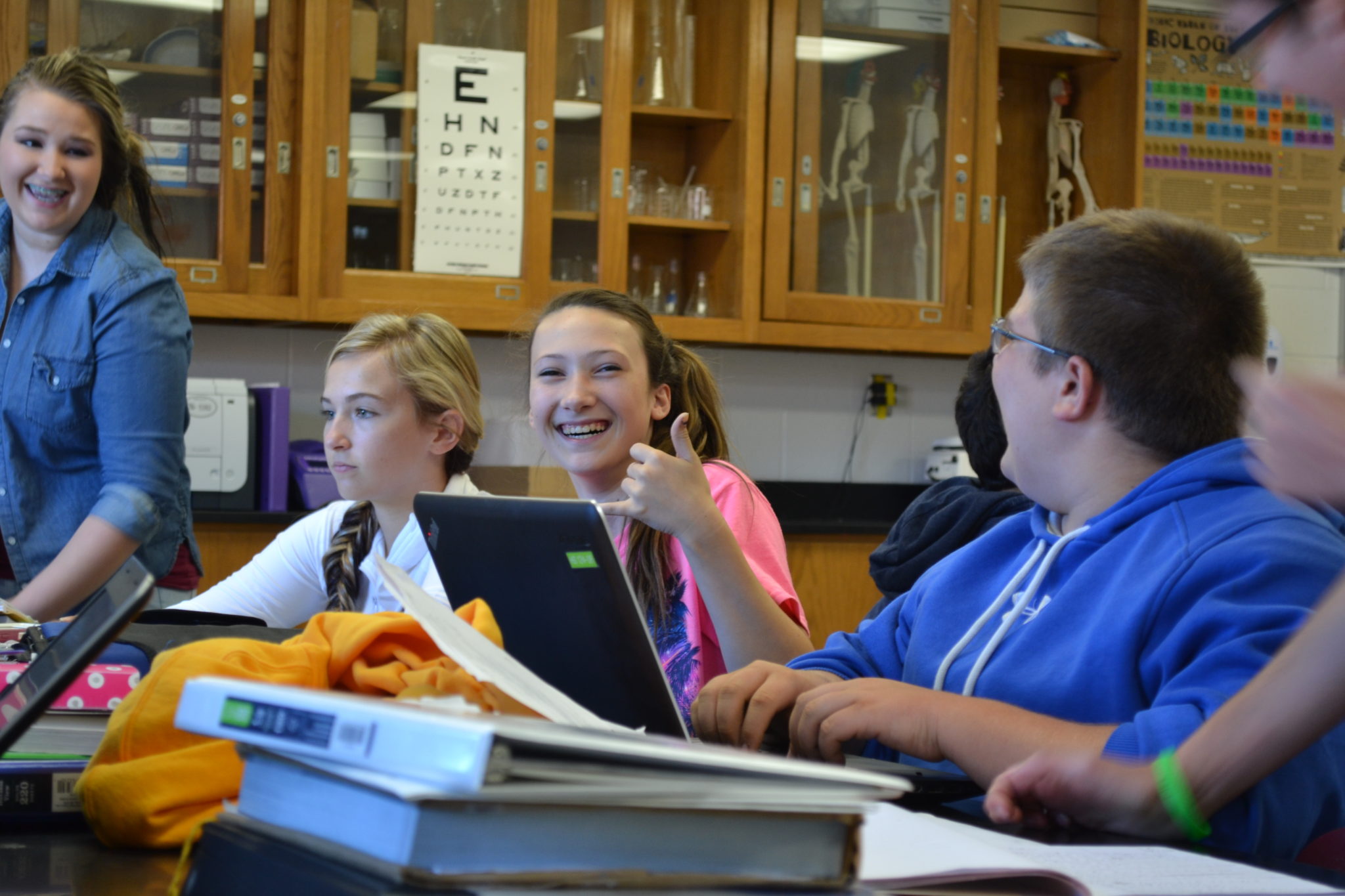OSLN sat down with Northwestern Local Schools’ superintendent and principals in West Salem, Ohio for a chat about rural STEM implementation. Their robust STEM programming draws hundreds of students from 13 area districts, open enrolling to take advantage of the unique opportunities afforded under the direction of Superintendent Layton.
Elementary Principal Julie McCumber recalls when STEM was first introduced in the classroom. Teachers presented third graders with an open-ended problem to solve as part of a STEM-focused lesson. McCumber remembers what a teacher told her after a rocky start.
“We told them that they need to solve the problem, and the response was- why? You’re the adult; you’ll solve it for us.”
This did nothing to deter them, rather demonstrating the serious need for innovative education approaches for the students of West Salem, in McCumber’s words, “to change the mindset of these little ones so that they have the confidence and the initiative to be the problem solvers themselves.”

Northwestern Middle and High schools were STEM designated in 2014, and they have more recently partnered with Battelle and the Literacy Design Collaborative to win a $680,000 “Straight A” grant for professional development in project-based learning. It’s been a long process up to this point; superintendent Jeffrey Layton remembers the difficulties of starting out.
“There were a lot of people throwing mud at us ten years ago and saying – oh, you can’t do that; that’s gonna cost too much; oh, you just need to focus on the foundational skills and the basics, we can’t do any more than that.”
High School Principal Mike Burkholder highlights how far the school has come since 2006.
“I think that now you’d have an outcry if we suddenly said – you know what, we’re just gonna focus on the basics… much larger than any resistance we had earlier.”
So how did they grow STEM from an idea to a reality in their rural district? They focused on two main points: professional development, and fostering a “STEM mindset.”
“It’s a comprehensive cultural change, perspective I think,” says Layton. “It should go across all disciplines, across all grade levels, all buildings. And our kids are benefiting.”
“We’re not a magnet school,” clarifies Burkholder. “We’re a regular school that has a strong emphasis in STEM type programs. And we take the same approach to everything else that we do to STEM. We’ve added some programming in fine arts, and we try to pool everything and overlap it. And that’s kind of what’s unique; we’re a regular, rural high school system sitting here in a cornfield.”
STEM type programs. And we take the same approach to everything else that we do to STEM. We’ve added some programming in fine arts, and we try to pool everything and overlap it. And that’s kind of what’s unique; we’re a regular, rural high school system sitting here in a cornfield.”
No matter how unique their school may be, they still have a guiding mission that all schools can support.
“I believe the best way to engage kids is for them to have their sights on something,” says Layton. “A goal in mind, and establish some goals and then how to get there…. There’s a lot of learning to do, but they need to kind of experience it.”
“It’s all about the kids and creating more opportunities for them.”
If you run a rural STEM school, these are the people to talk to. Reach out to them personally if you have any questions, or want to visit the school!
Jeff Layton, Superintendent
Mike Burkholder, High School Principal
Joey Brightbill, Middle School Principal
Scott Smith, Curriculum Coordinator